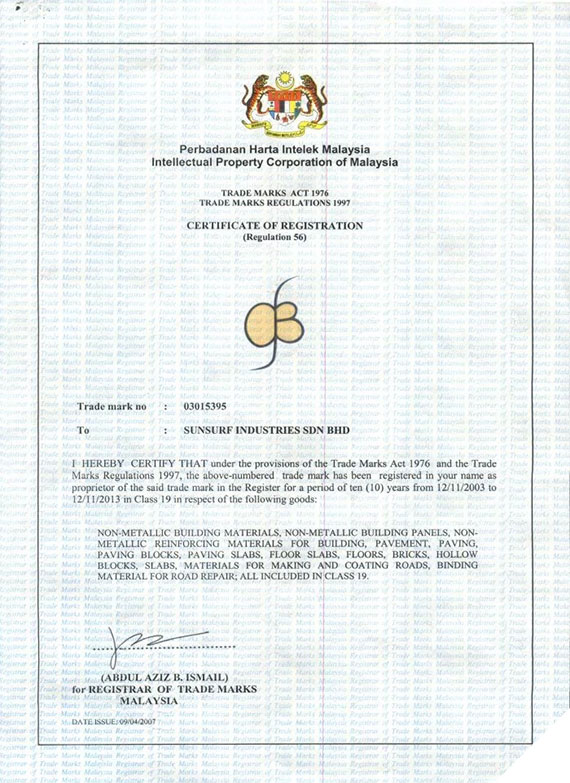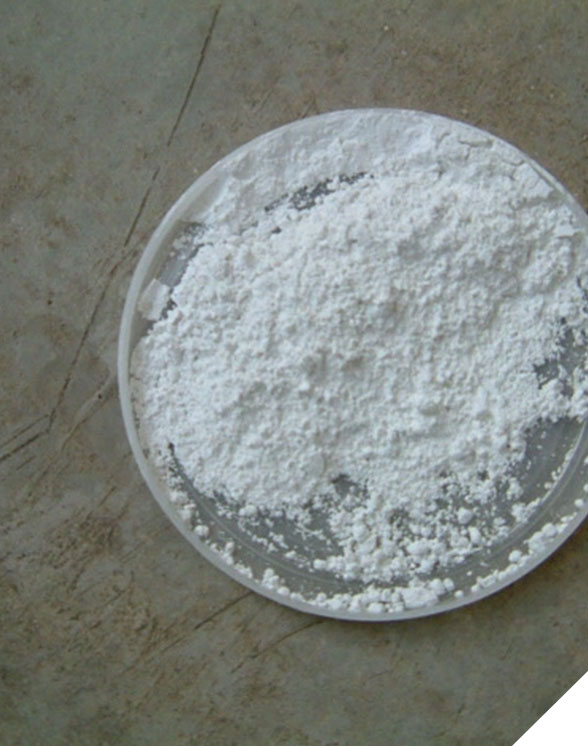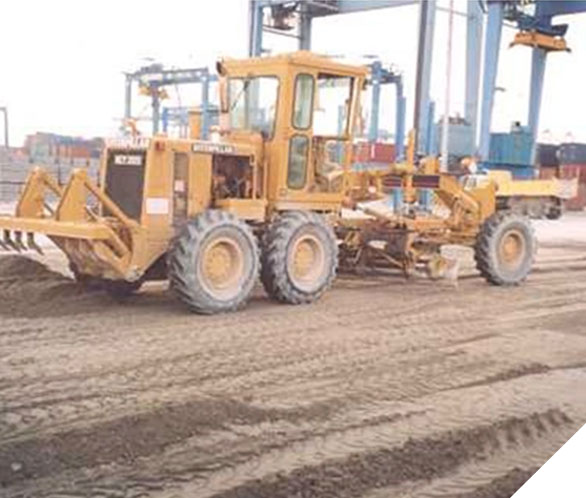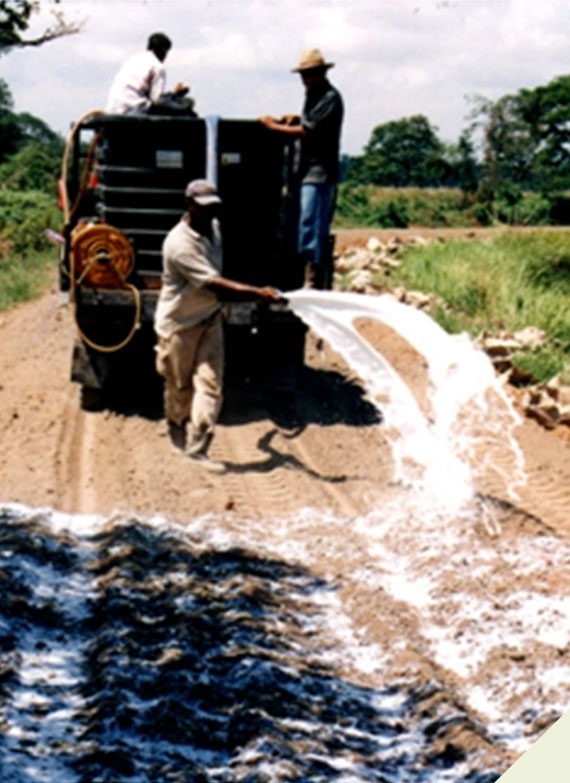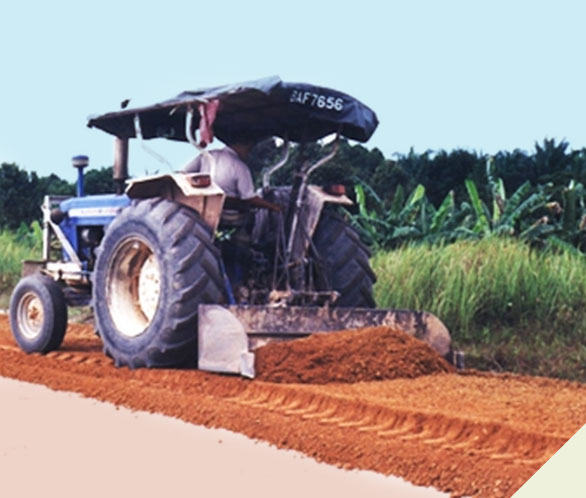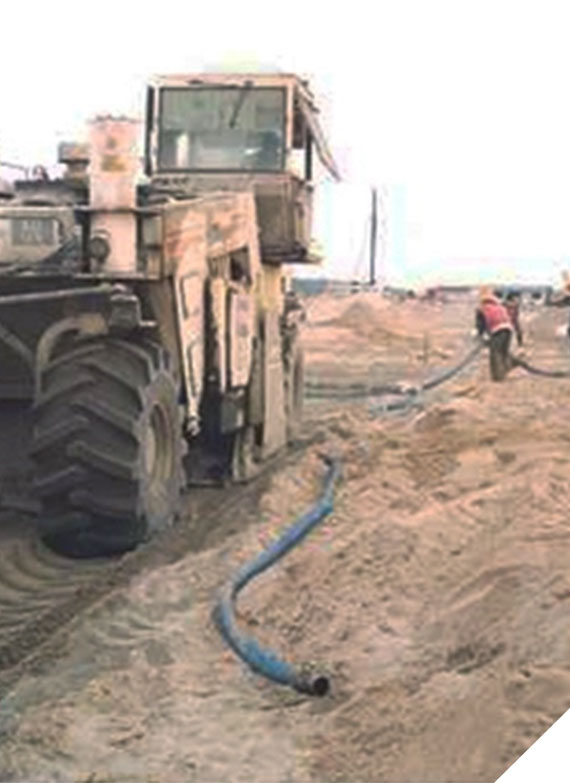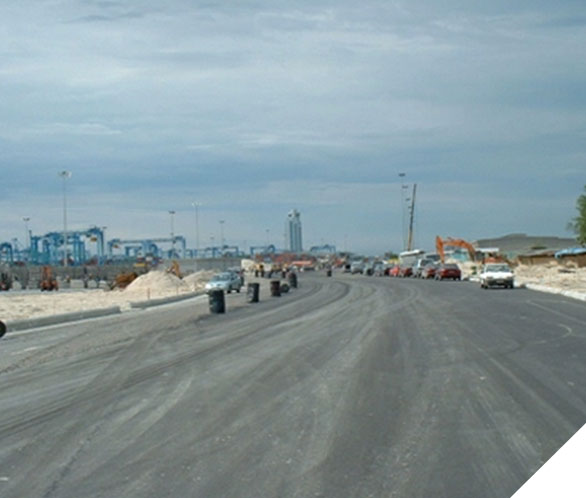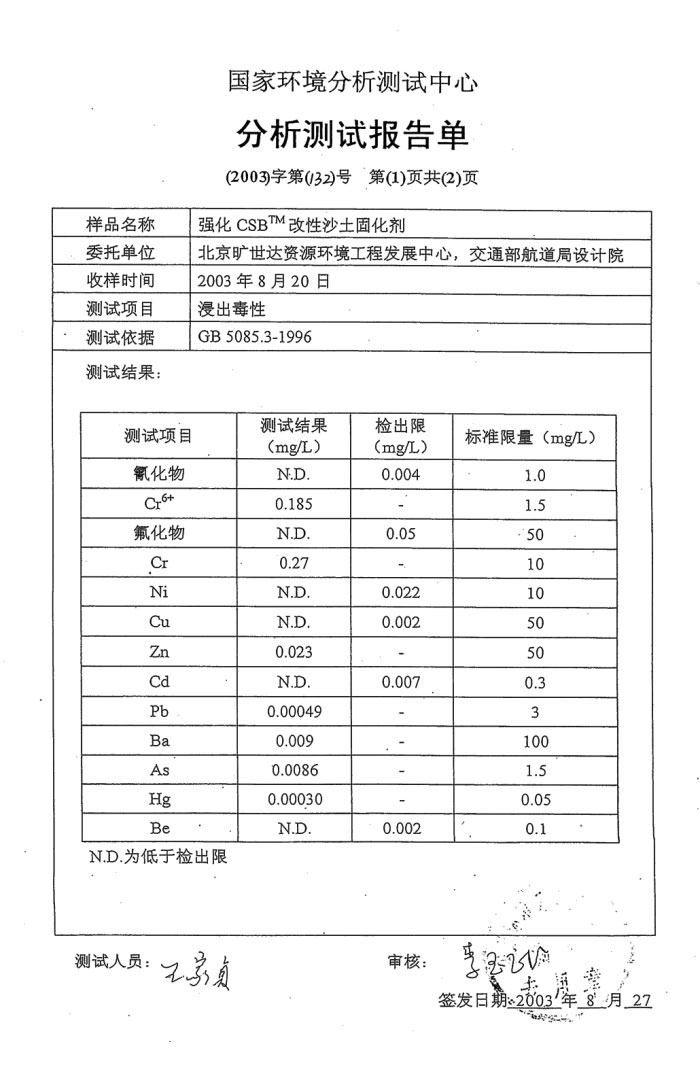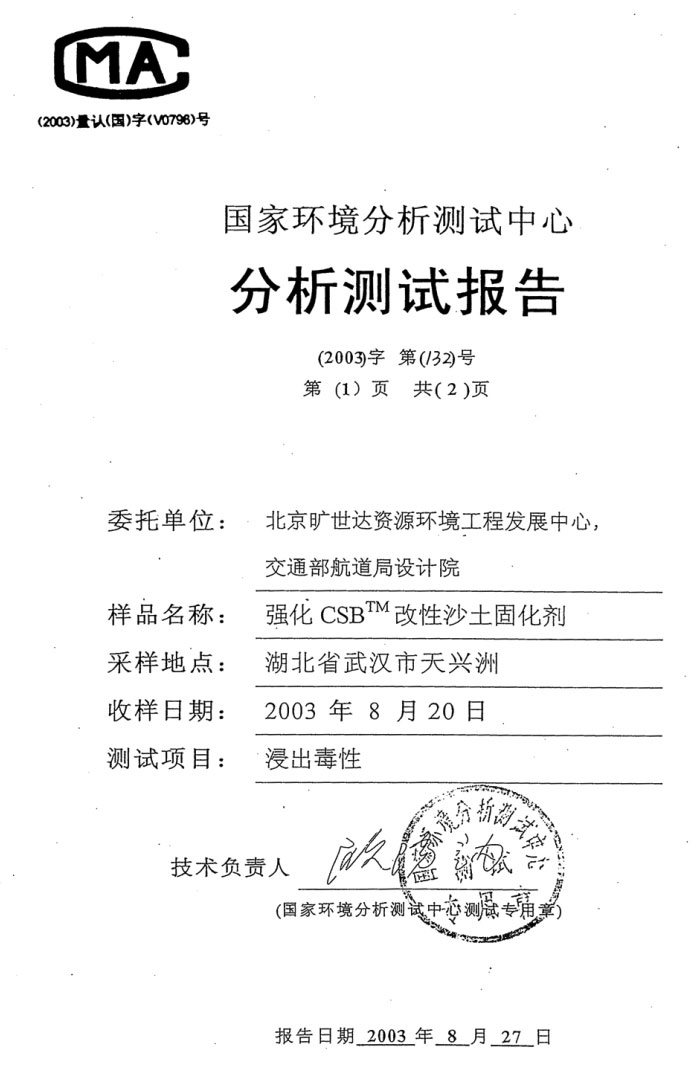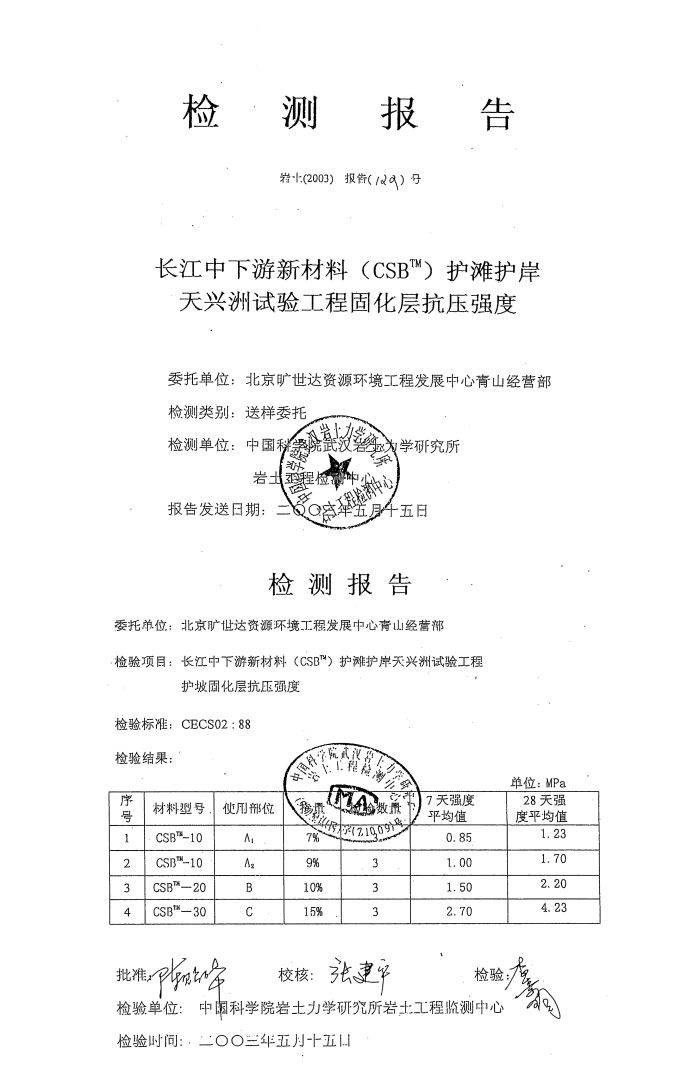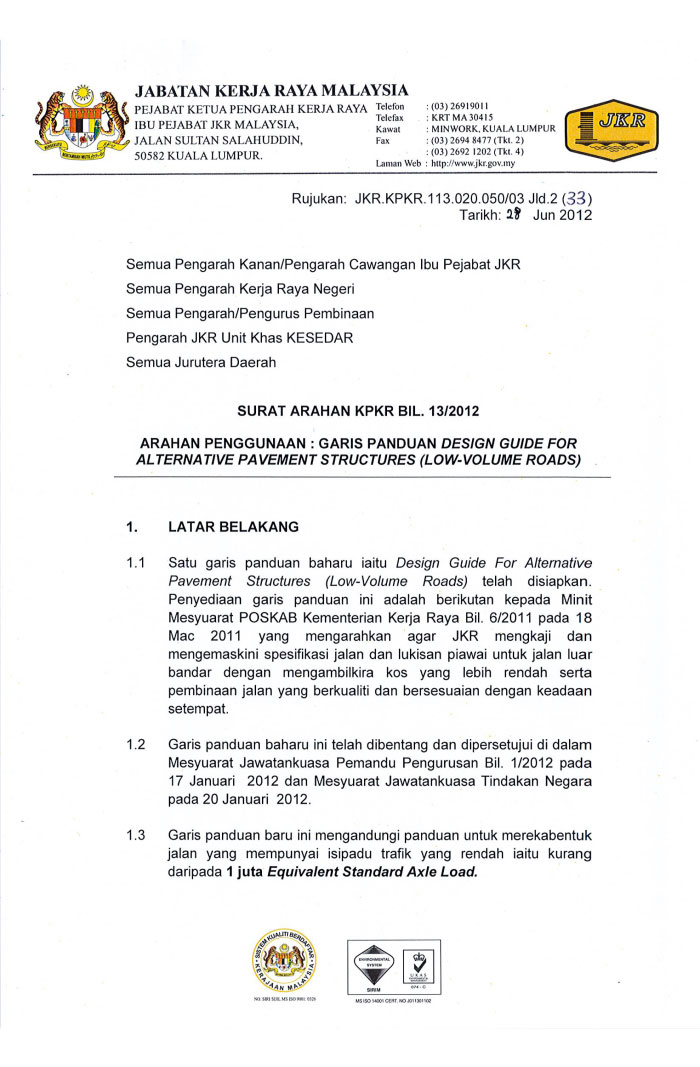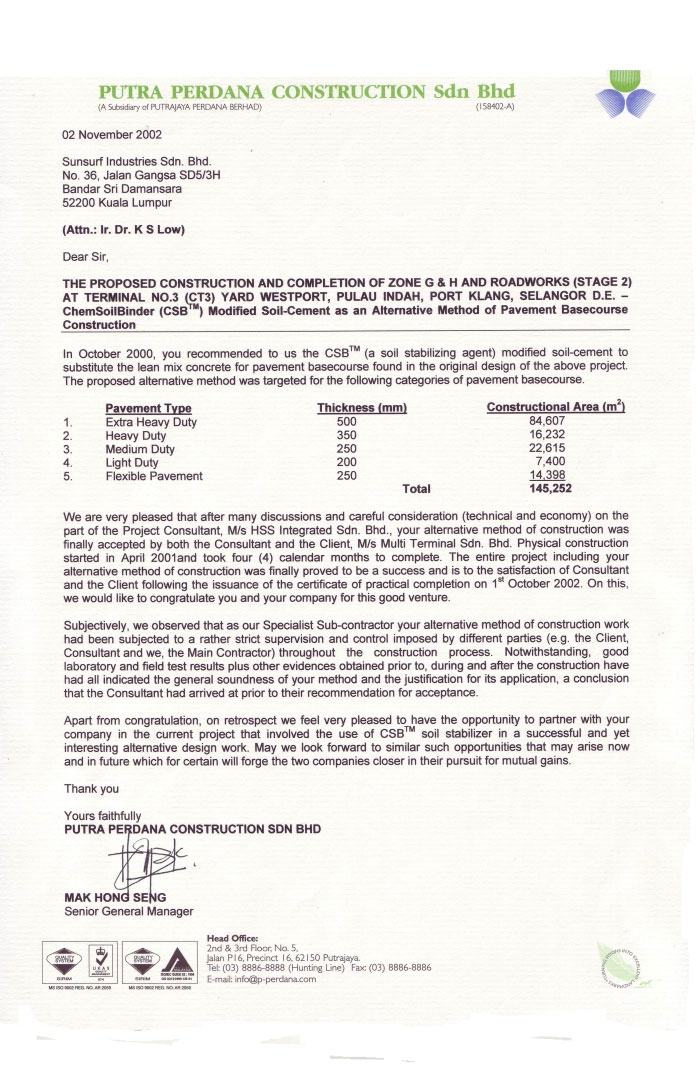CSBTM (ChemSoilBinderTM) is a polymer modified chemical soil stabilizer that contains residues of many basic chemicals in the compound which are harmonized through special processes during its manufacturing. This product is harmless to the environment as it does not contain any toxic ingredients that can give rise to any adverse environmental effects.
Depending on the type of soil encountered, 5 to 7% of CSBTM (as a percentage of dry soil weight) is mixed with the in-situ soil to produce the stabilized, hard bounded soil layer which is much more stronger and durable than the original untreated soil. Generally, within the allowable dosage an increase in amount of CSBTM added would produce a stronger product. The moisture content of the soil-stabiliser mixture affects the degree of densification achieved during compaction, and degree of hydration during curing period. These factors will determine the strength of final finished product. In general, the degree of uniformity of spreading and then mixing of CSBTM stabilizer with the soil is one of the prime factors for yielding high strength stabilized soil while moisture content that close to the optimum moisture content (OMC) value of the mixed product is complimentary. Adequate compaction is of course another important element for the production of satisfactory stabilized soil layer. Depending on the type of the soil to be treated at the site the grade/type of CSBTM formulated for the job may vary.


